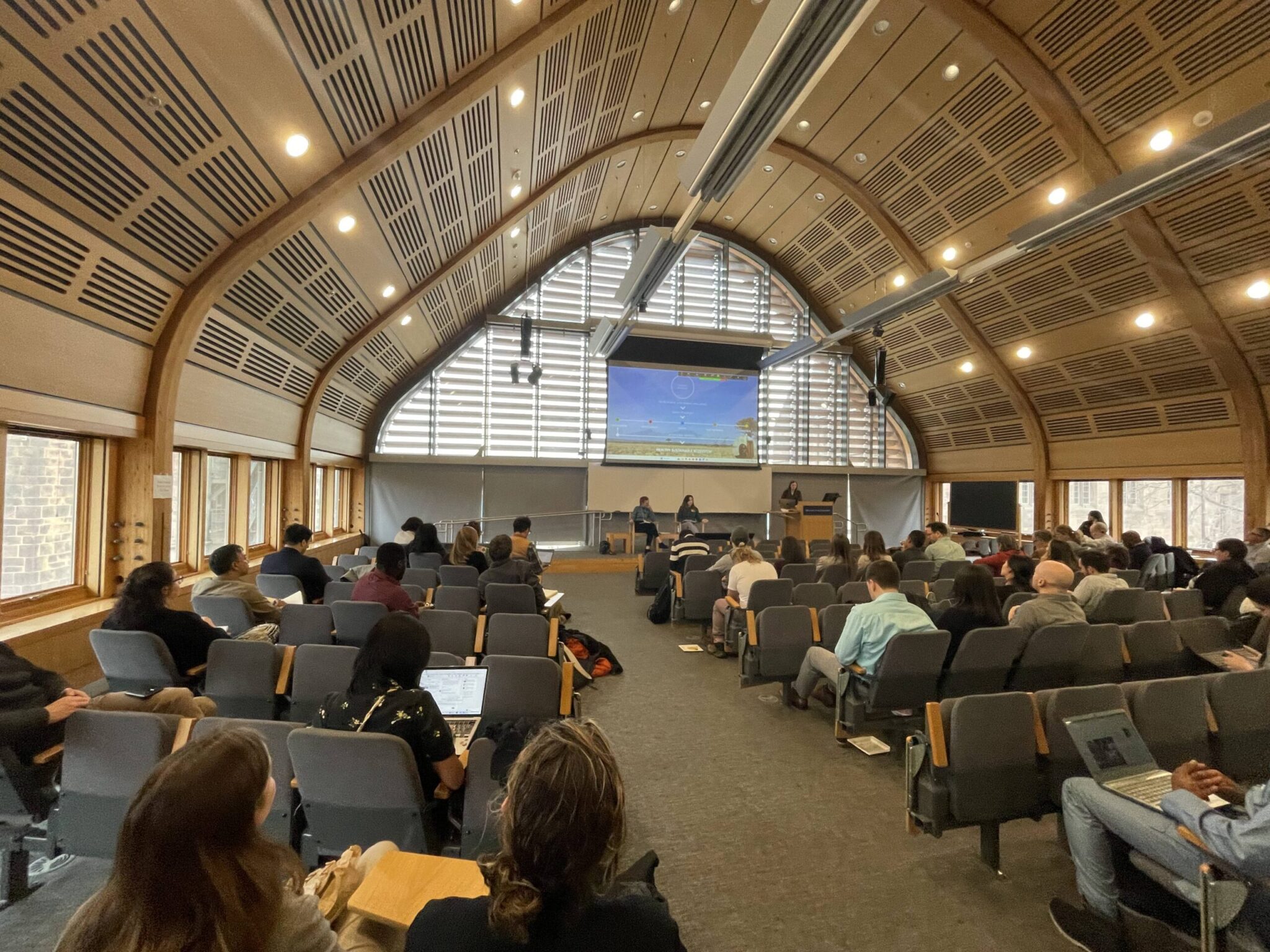School of the Environment conference looks to the future of tropical forests
In its 30th annual conference, the International Society of Tropical Foresters discussed the challenges and future of tropical forest management.

Hanwen Zhang, Contributing Photographer
Spanning 12 percent of Earth’s land surface but storing 25 percent of the world’s total carbon, tropical forests pack a punch well above their land share. They are also among the planet’s most vulnerable ecosystems.
The Yale chapter of the International Society of Tropical Foresters hosted its 30th annual conference at the School of the Environment on Feb. 2 and 3. Starting Friday morning and ending on Saturday, the hybrid, two-day event invited attendees to reflect on the challenges tropical forests face while turning an eye to their restoration and preservation.
Nonprofit directors, economists, policymakers and researchers delivered talks on the current state of forest health and offered potential solutions from their work. The presentations were followed by networking opportunities, a poster presentation session and the conferral of their Innovation Prize Award.
“When you’re thinking about ecosystem restoration and conservation, it’s really so much of a holistic approach that we need to be taking,” event organizer Sophia Roberts ENV ’25 said. “It’s about everything that’s connected and being able to disseminate those co-benefits to the local community.”
Speakers at the event sounded the alarm on current rates of tropical forest loss.
Keynote speaker and Wildlife Conservation Society Executive Director Daniel Zarin explained that the majority of tropical forests could currently be compromised or lost. According to the Forest Landscape Integrity Index — a measure of a forest’s overall well-being produced by data aggregation and algorithms — almost 60 percent of all the world’s forests are in either medium or low integrity, meaning that they are partially or completely destroyed. Zarin added that these losses would come with steep costs to ecosystem resilience and biodiversity.
Recent destruction of the Amazon — the world’s largest tropical forest — has accounted for some of these declines, speakers said.
Ane Alencar, panelist and director of the Amazon Environmental Research Institute, noted that Brazil is among the top ten countries that have reported the greatest tropical forest loss.
Alencar added that almost half of the nation’s domestic emissions have been related to deforestation, primarily related to illegal logging, land use, agriculture and mining.
She said that her research suggested that rural areas contributed to roughly 68 percent of all emissions.
Other presentations directed attention to the scope of agriculture-driven tropical deforestation. According to Peter Umunay, senior environmental specialist at the Global Environmental Facility, commodity and resource-driven cultivation has cost 6.4 to 8.8 million hectares of tropical forest cover each year — an area that falls roughly between the size of West Virginia and Indiana, and accounts for up to 83 percent of all annual tropical forest loss.
Though forest declines continue, speakers also said that the past year has experienced some noteworthy slowing in deforestation rates — many of which were enabled by stronger government intervention. Alencar praised the “strategic enforcement” of conservation laws under Luiz Inácio Lula da Silva’s presidency, which she said has seen a 50 percent reduction in deforestation over this past year.
“We need one thing, that is political will, to [stop deforestation], and we need engagement of society and also [the] private sector to support that,” Alencar said.
Speaker Kimberly Carlson noted that the same trend had happened in Indonesia, though recent decreases in deforestation rates might be attributed to a wider range of factors. Carlson traced the nation’s regulation efforts to a 2011 moratorium on new permits for palm oil, mining and other agricultural activities across one-third of the tropical forest.
However, these measures also coincided with new land-tenure security programs and a reduction in palm oil prices — all of which could have “cumulatively” resulted in a more significant drop-off, Carlson explained.
In their solutions to current conservation efforts, speakers presented visions of public policy coupled with financial incentives.
In the absence of a “silver [bullet]” for supporting forests, Zarin added that preserving healthy tropical forests will require as much financing as the carbon offsets market. Per Zarin, high-integrity forests still remain at risk of destruction and often lack the necessary resources to protect them.
Unlike carbon offsets, which must definitively yield results, financing forests could operate like healthcare, where money is spent not just for prevention but also proactive support, Zarin said. In this model, money would go towards restoration but also into interventions that could slow the degradation. Zarin noted that 750 million hectares of high-integrity forest are still unprotected by the market, with no finances dedicated towards their preservation, leaving them at risk of disappearing.
“Today, there is no clear-cut blueprint for tackling social issues about the environment,” Frederick Addai ENV ’23 said. “We just need to keep on learning and engaging with people to collaborate on how best to go about with the world.”The International Society of Tropical Foresters was founded in 1950.
Correction, Feb. 12: This article has been corrected to fix several misspellings of Kimberly Carlson’s last name.







